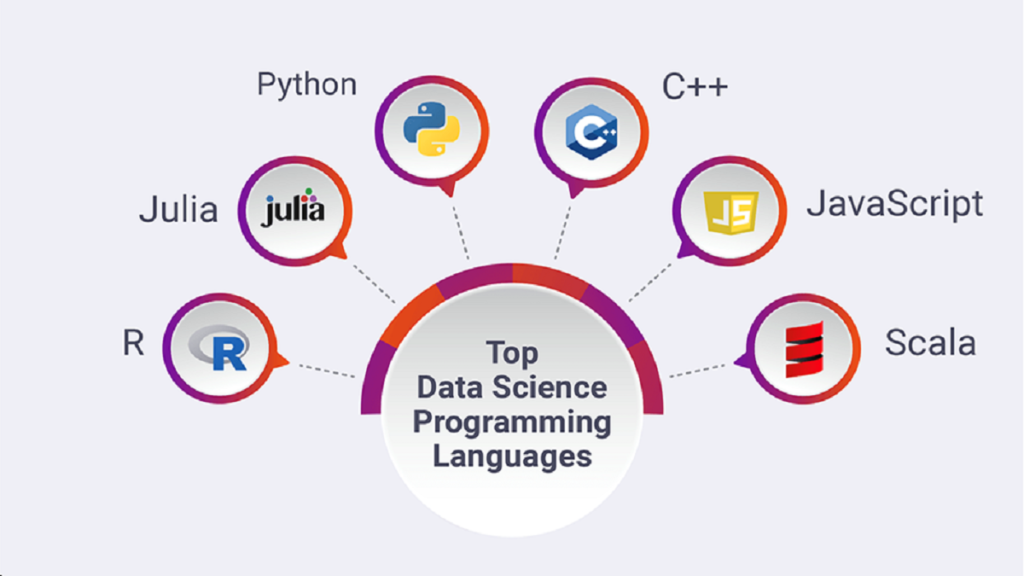
Data science is a multidisciplinary field that involves analyzing and interpreting large amounts of data to gain insights and make informed decisions. There are several programming languages commonly used in data science, each with its strengths and weaknesses. Here are some of the top programming languages for data science:
Python:
Python is one of the most popular programming languages for data science. It has a rich ecosystem of libraries and tools specifically designed for data manipulation, analysis, and visualization, such as NumPy, pandas, and matplotlib. Python is known for its simplicity, readability, and versatility, making it an excellent choice for beginners and experienced data scientists alike.
R:
R is another widely used programming language in data science, particularly in academia and statistical analysis. It provides a vast collection of packages for statistical modeling, machine learning, and data visualization, such as ggplot2 and caret. R excels in statistical computations and has a strong focus on data manipulation and exploration.
SQL:
SQL (Structured Query Language) is essential for working with relational databases. It is used to extract, manipulate, and analyze data stored in databases. SQL is particularly valuable for data wrangling, data cleaning, and performing aggregations or complex queries. Proficiency in SQL is crucial for working with large datasets and extracting insights from structured data.
Julia:
Julia is a relatively new programming language designed specifically for high-performance numerical computing. It combines the ease of use of Python and the speed of languages like C or Fortran. Julia is gaining popularity in the data science community due to its fast execution times, extensive mathematical libraries, and compatibility with other languages.
Scala:
Scala is a programming language that runs on the Java Virtual Machine (JVM) and is widely used in big data processing frameworks like Apache Spark. It offers a functional programming paradigm and seamlessly integrates with Java libraries. Scala’s ability to handle large-scale distributed data processing makes it a valuable language for big data analytics and machine learning applications.
SAS:
SAS (Statistical Analysis System) is a programming language and software suite used extensively in industries like healthcare, finance, and market research. It provides a comprehensive set of tools for data management, advanced analytics, and predictive modeling. SAS is known for its robustness, scalability, and enterprise-level support.
These are just a few examples of programming languages commonly used in data science. The choice of language depends on factors such as the specific task at hand, the size of the dataset, the availability of libraries and tools, and personal preference. It’s worth noting that many data scientists use multiple programming languages depending on the requirements of their projects.
